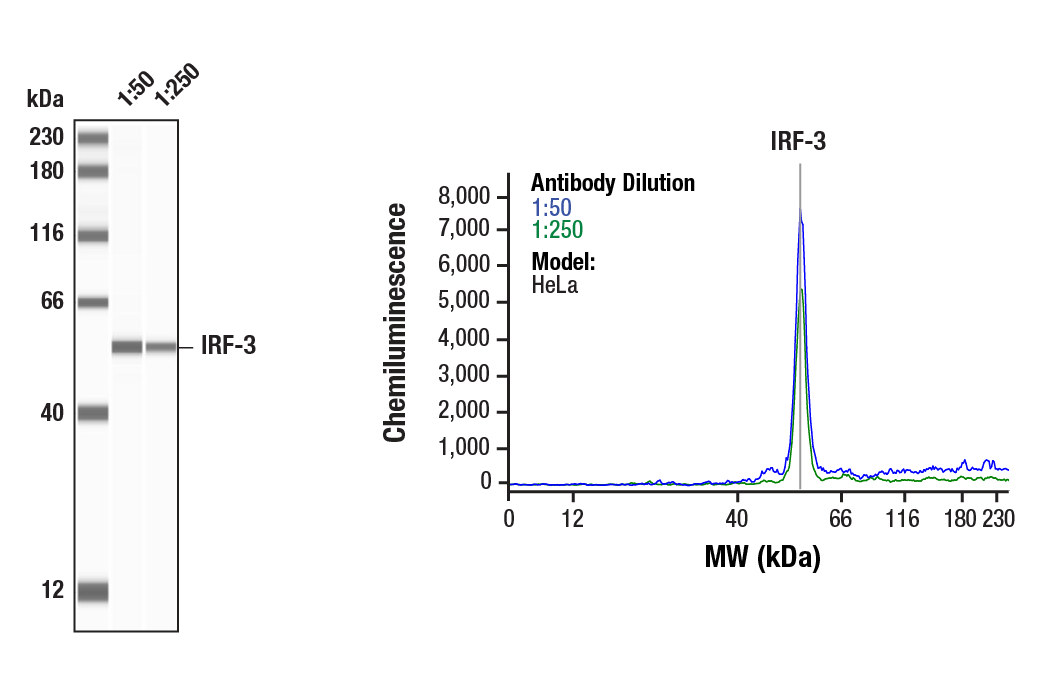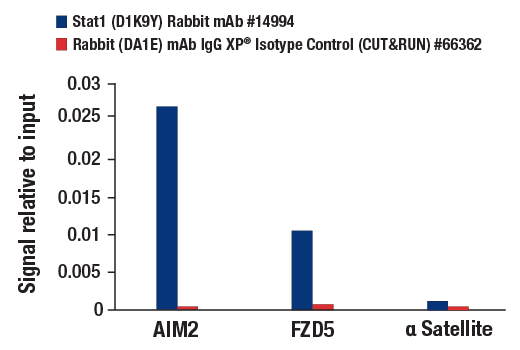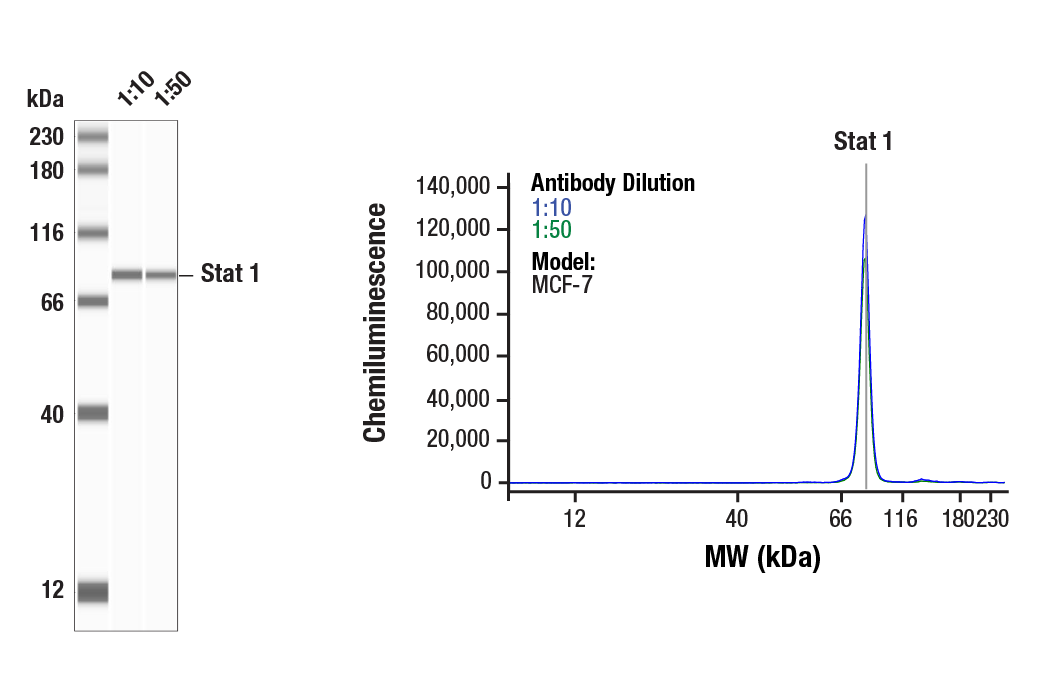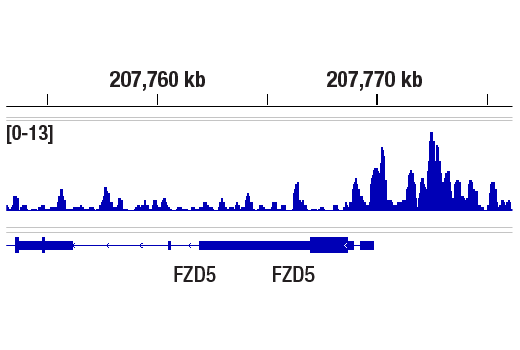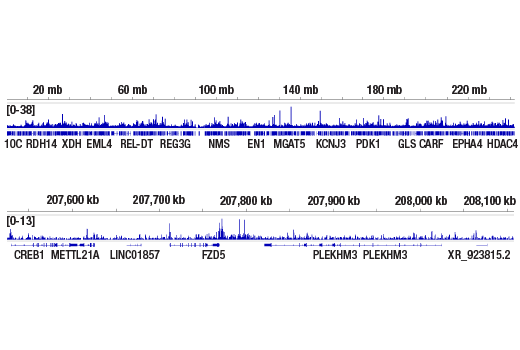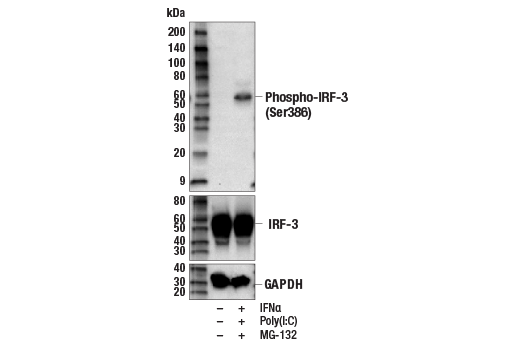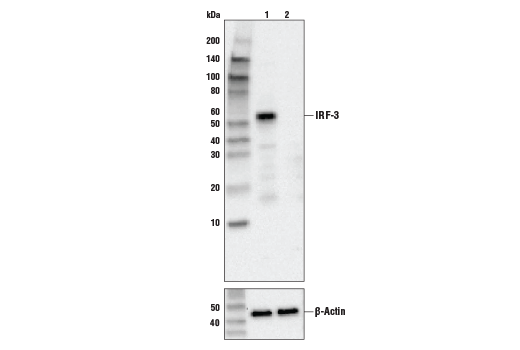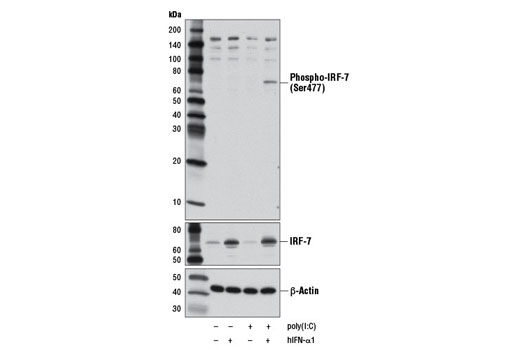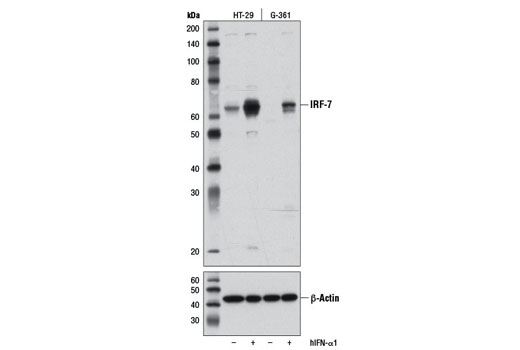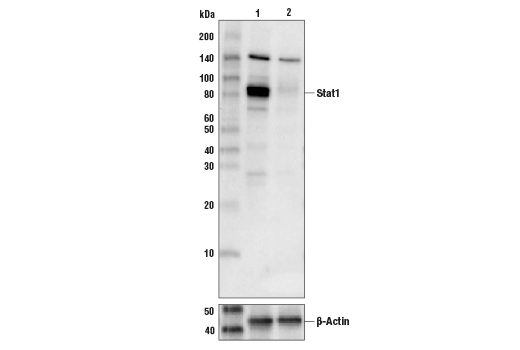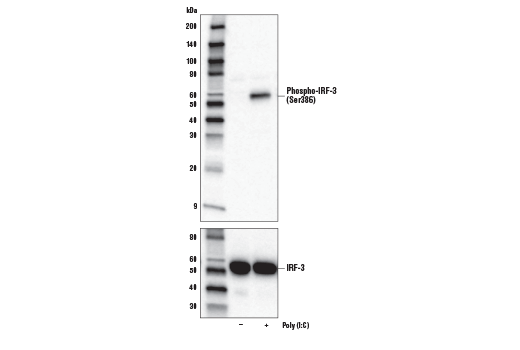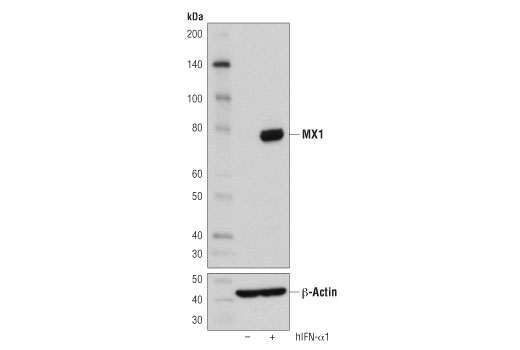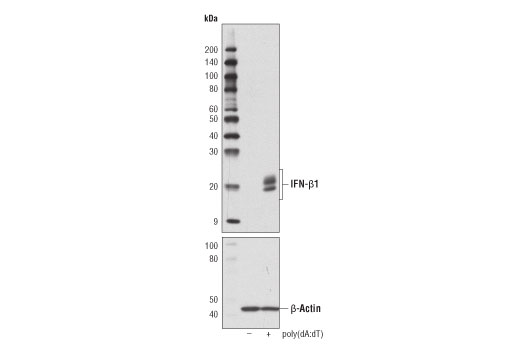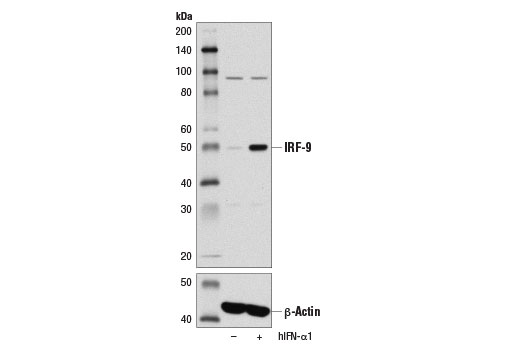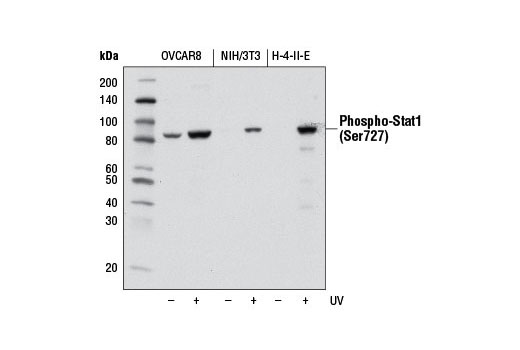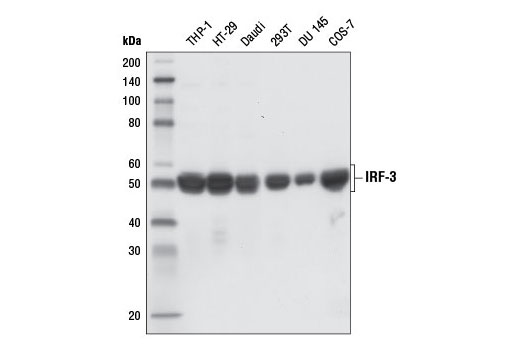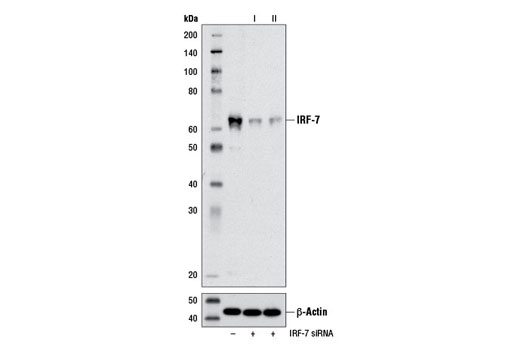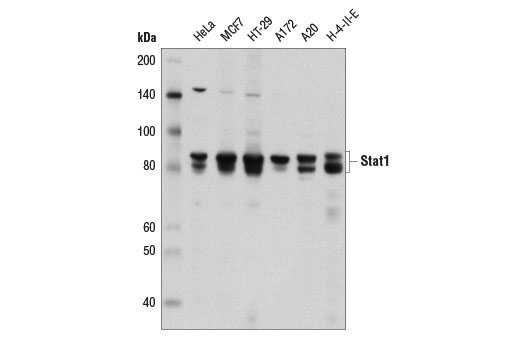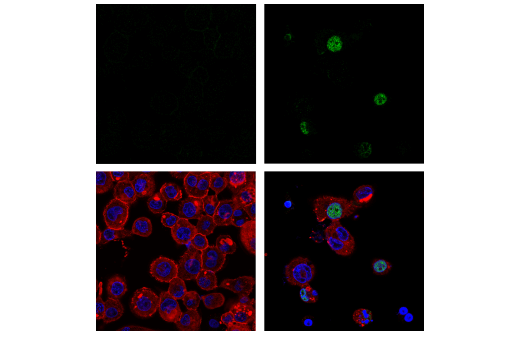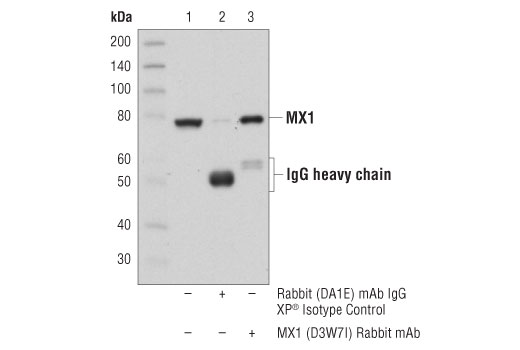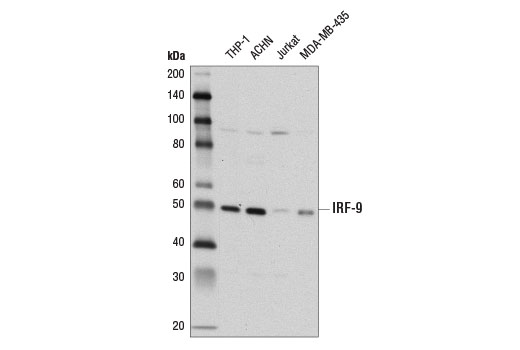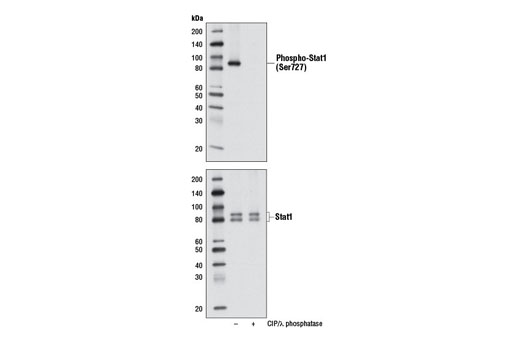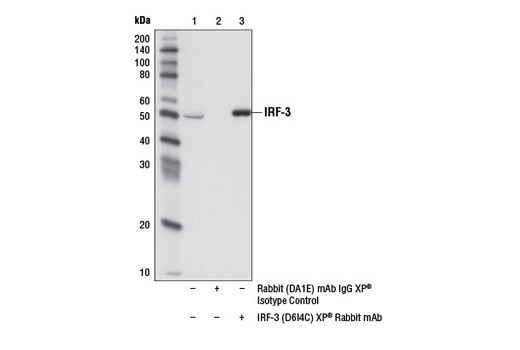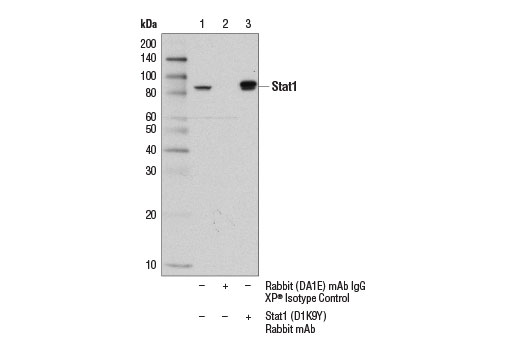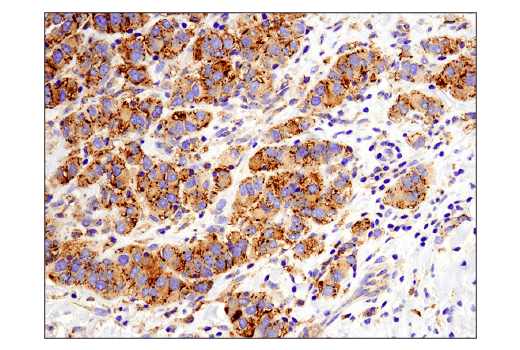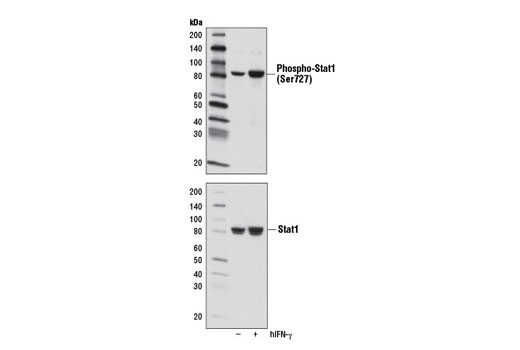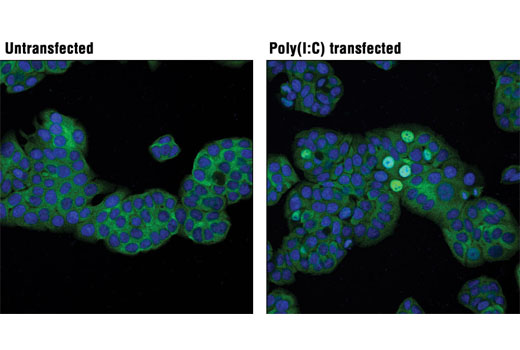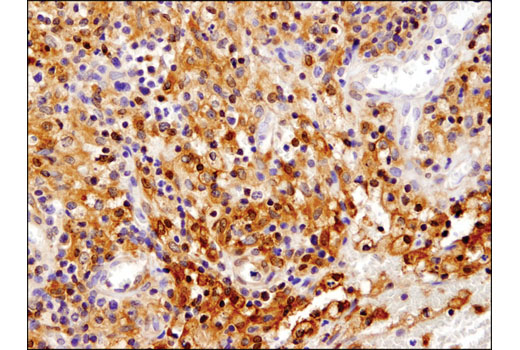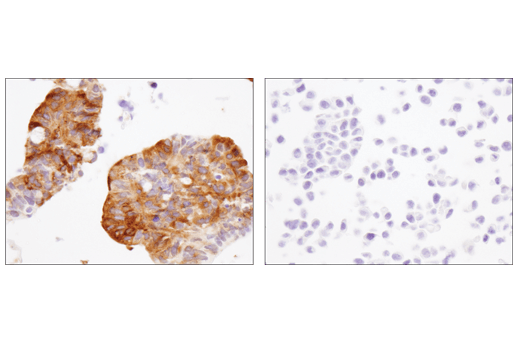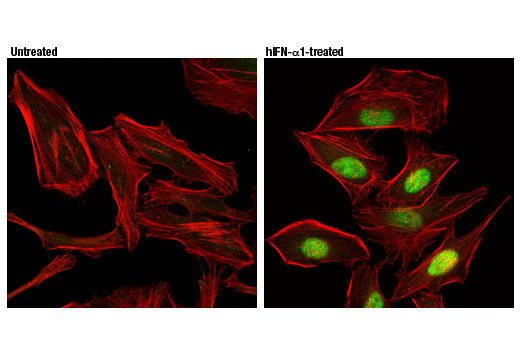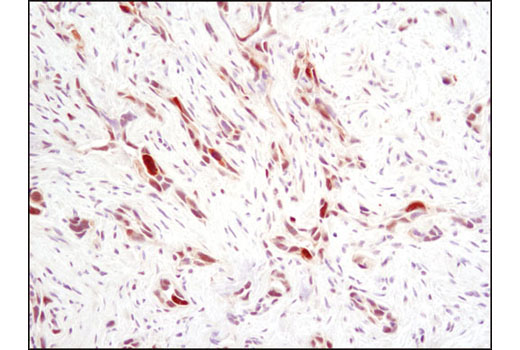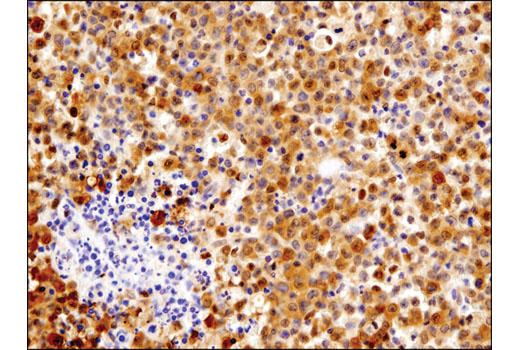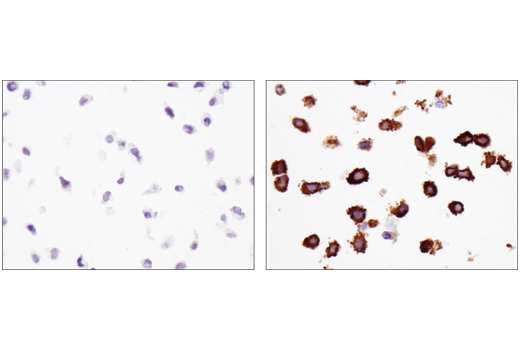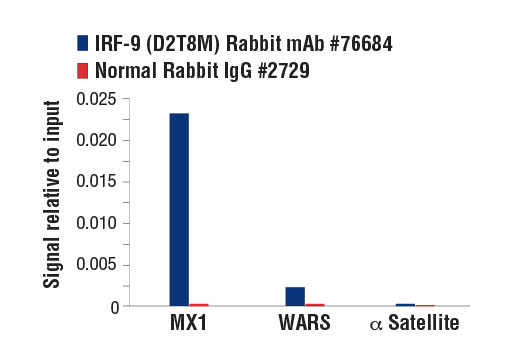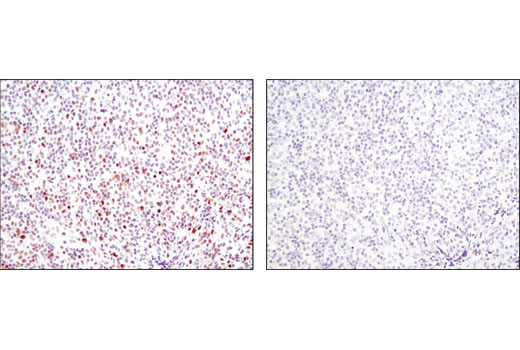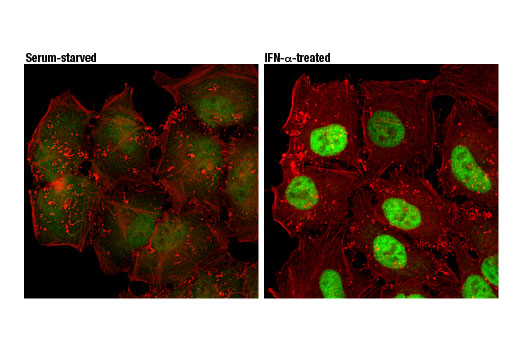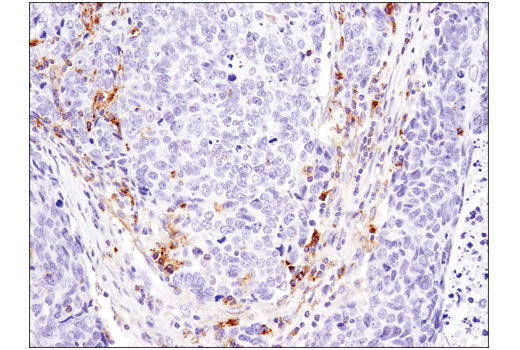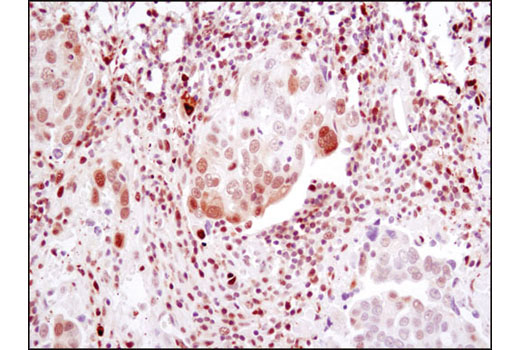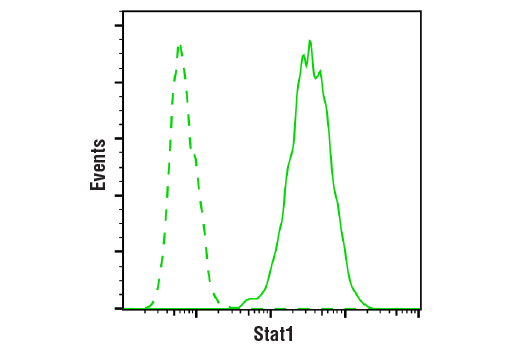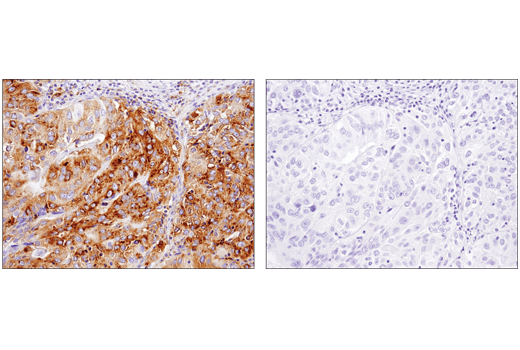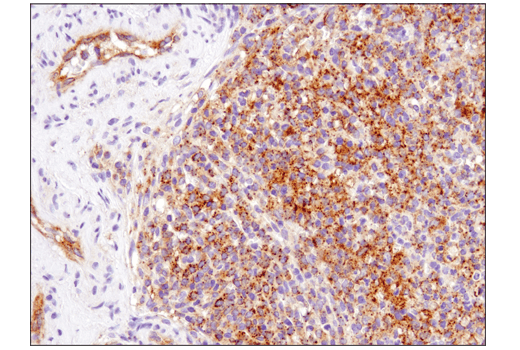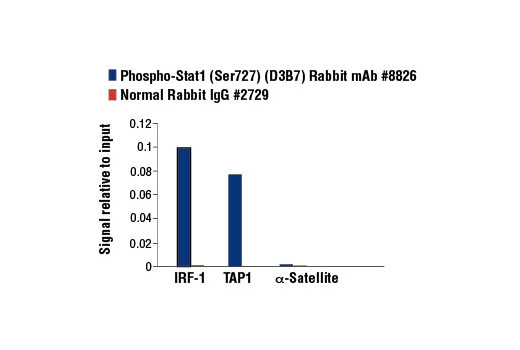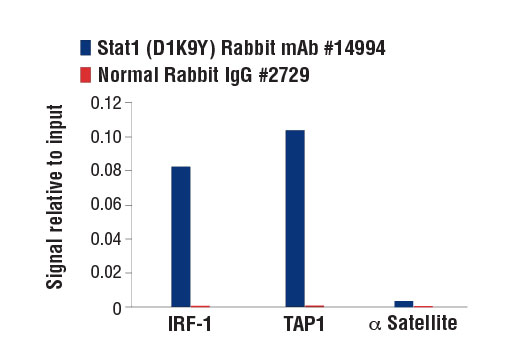| Product Includes | Product # | Quantity | Mol. Wt | Isotype/Source |
|---|---|---|---|---|
| Phospho-IRF-3 (Ser386) (E7J8G) XP® Rabbit mAb | 37829 | 20 µl | 50-55 kDa | Rabbit IgG |
| IRF-3 (D6I4C) XP® Rabbit mAb | 11904 | 20 µl | 50-55 kDa | Rabbit IgG |
| Phospho-IRF-7 (Ser477) (D7E1W) Rabbit mAb | 12390 | 20 µl | 65 kDa | Rabbit IgG |
| IRF-7 (D2A1J) Rabbit mAb | 13014 | 20 µl | 65 kDa | Rabbit IgG |
| IFN-β1 (D1D7G) Rabbit mAb | 73671 | 20 µl | 19, 21 kDa | Rabbit IgG |
| Phospho-Stat1 (Ser727) (D3B7) Rabbit mAb | 8826 | 20 µl | 91 kDa | Rabbit IgG |
| Stat1 (D1K9Y) Rabbit mAb | 14994 | 20 µl | 84, 91 kDa | Rabbit IgG |
| IRF-9 (D2T8M) Rabbit mAb | 76684 | 20 µl | 48 kDa | Rabbit IgG |
| MX1 (D3W7I) Rabbit mAb | 37849 | 20 µl | 76 kDa | Rabbit IgG |
| Anti-rabbit IgG, HRP-linked Antibody | 7074 | 100 µl | Goat |
Please visit cellsignal.com for individual component applications, species cross-reactivity, dilutions, protocols, and additional product information.
Description
The Type I Interferon Induction and Signaling Antibody Sampler Kit provides an economical means of detecting the activation of pathways leading to upregulation of type I interferon (IFN), expression of IFN-β1, activation of signaling downstream of type I IFN, and expression of the MX1 interferon response gene, using phospho-specific and control antibodies. The kit includes enough antibodies to perform at least two western blot experiments.
Storage
Background
The innate immune system uses pattern recognition receptors (PRRs) that detect conserved pathogen-associated molecular patterns (PAMPs), such as cytoplasmic double-stranded RNA, to detect and initiate an immune response to viral infection. Detection of virus by PRRs leads to phosphorylation and nuclear translocation of IRF-3 and IRF-7, resulting in upregulation of type I interferons, which include IFN-α and IFN-β (1-3). Type I interferons signal through the interferon α/β receptor (IFNAR), leading to phosphorylation and activation of Stat1 and Stat2, which form a complex with IRF-9 (4,5). This complex translocates to the nucleus where it induces transcription of interferon response genes including viral restriction factors, such as MX1, that limit viral replication and propagation (4-7).
- Servant, M.J. et al. (2003) J Biol Chem 278, 9441-7.
- Lin, R. et al. (2000) J Biol Chem 275, 34320-7.
- Sato, M. et al. (2000) Immunity 13, 539-48.
- Fu, X.Y. et al. (1990) Proc Natl Acad Sci U S A 87, 8555-9.
- Qureshi, S.A. et al. (1995) Proc Natl Acad Sci U S A 92, 3829-33.
- Staeheli, P. et al. (1986) Cell 44, 147-58.
- Staeheli, P. and Haller, O. (1985) Mol Cell Biol 5, 2150-3.
Background References
Trademarks and Patents
Limited Uses
Except as otherwise expressly agreed in a writing signed by a legally authorized representative of CST, the following terms apply to Products provided by CST, its affiliates or its distributors. Any Customer's terms and conditions that are in addition to, or different from, those contained herein, unless separately accepted in writing by a legally authorized representative of CST, are rejected and are of no force or effect.
Products are labeled with For Research Use Only or a similar labeling statement and have not been approved, cleared, or licensed by the FDA or other regulatory foreign or domestic entity, for any purpose. Customer shall not use any Product for any diagnostic or therapeutic purpose, or otherwise in any manner that conflicts with its labeling statement. Products sold or licensed by CST are provided for Customer as the end-user and solely for research and development uses. Any use of Product for diagnostic, prophylactic or therapeutic purposes, or any purchase of Product for resale (alone or as a component) or other commercial purpose, requires a separate license from CST. Customer shall (a) not sell, license, loan, donate or otherwise transfer or make available any Product to any third party, whether alone or in combination with other materials, or use the Products to manufacture any commercial products, (b) not copy, modify, reverse engineer, decompile, disassemble or otherwise attempt to discover the underlying structure or technology of the Products, or use the Products for the purpose of developing any products or services that would compete with CST products or services, (c) not alter or remove from the Products any trademarks, trade names, logos, patent or copyright notices or markings, (d) use the Products solely in accordance with CST Product Terms of Sale and any applicable documentation, and (e) comply with any license, terms of service or similar agreement with respect to any third party products or services used by Customer in connection with the Products.
